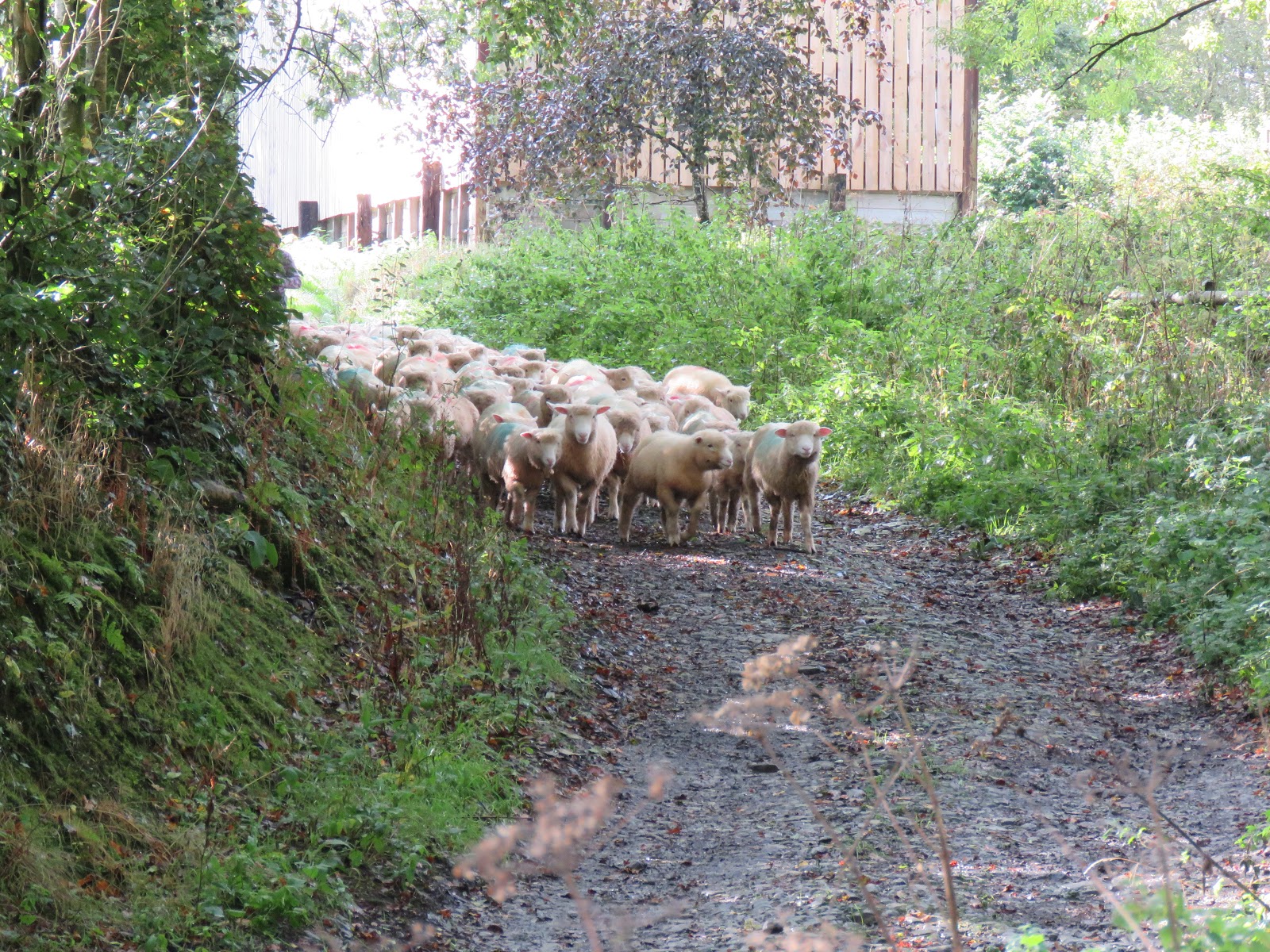 |
| This photo op sent me swooning with delight. Too cute for words. |
Fascinating Fact of the Day about Witheridge:
From this site:
 |
| At one point, the lamb herd wandered over to the pond next door to our house, Pond Cottage. We couldn’t help but laugh. |
I can’t help but tease Tom over his participation in this process as a competent shepherd. Moving this many sheep at one time always requires a third person to assist, most often a neighbor or friend.
 |
| The lambs wandered off to wherever they liked with little regard to the mission at hand. |
 |
| They checked out the pond. |
 |
| They stopped to graze on some fresh grass, far from where they were headed. |
 |
| Finally, they acquiesced and entered the area to which they’d be nudged along. |
 |
| The chickens were curious as they watched the lambs herded into the barn. |
 |
| With all of them in the fenced area, John nudged them along further. |
 |
| Still, a little resistance from the young ones. |
 |
| With all of them inside the fenced area, John and Renate locked the gate. John is a retired doctor (no retiring for them working so hard on this 150-acre farm) and handles most sheep’s health issues with expertise and ease. |
May you have a fine day!
Photo from one year ago today, October 3, 2018:
 |
| A giraffe visiting our garden was quite a thrill. We’d seen this large male at other locations in the park. For more photos, please click here. |

























